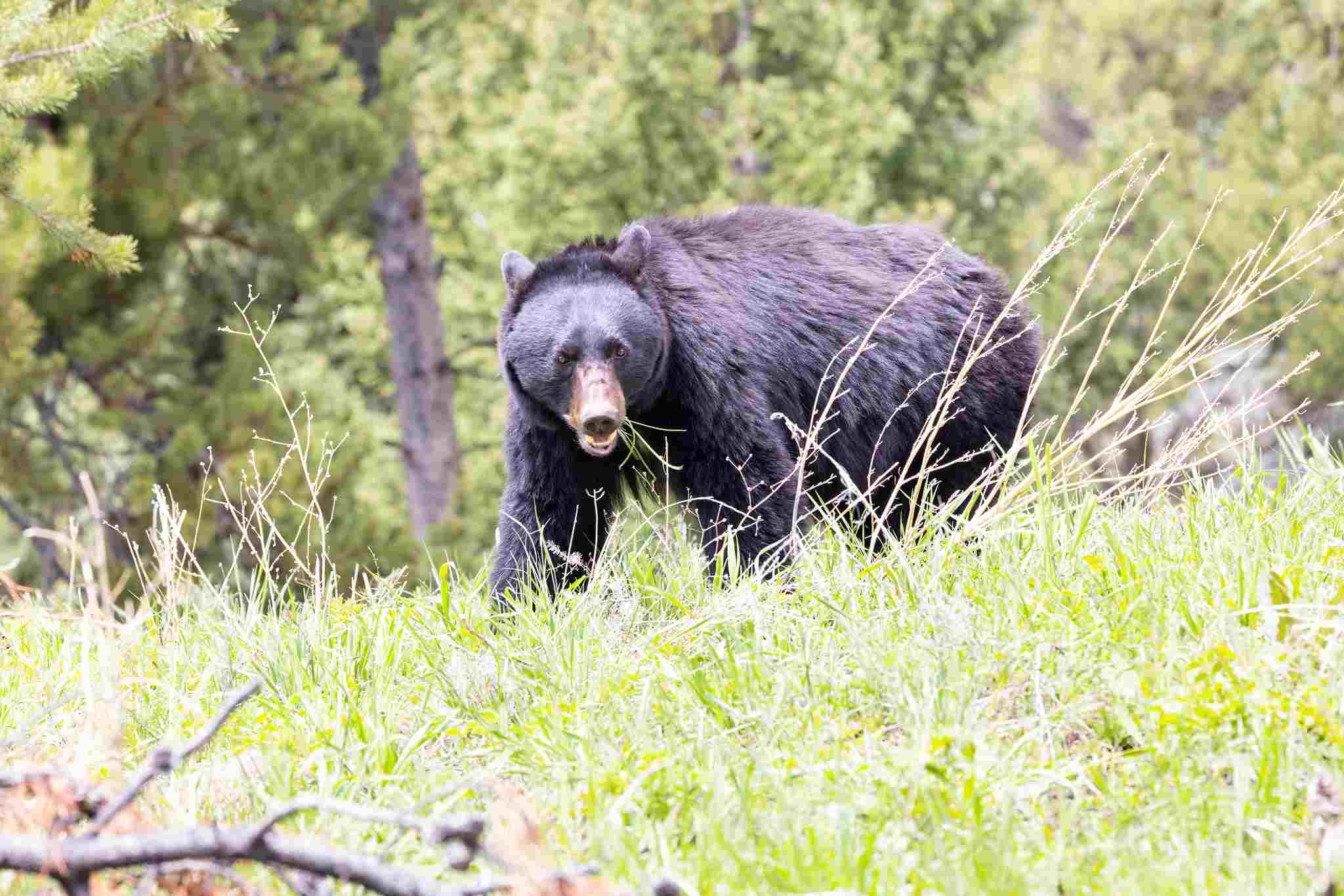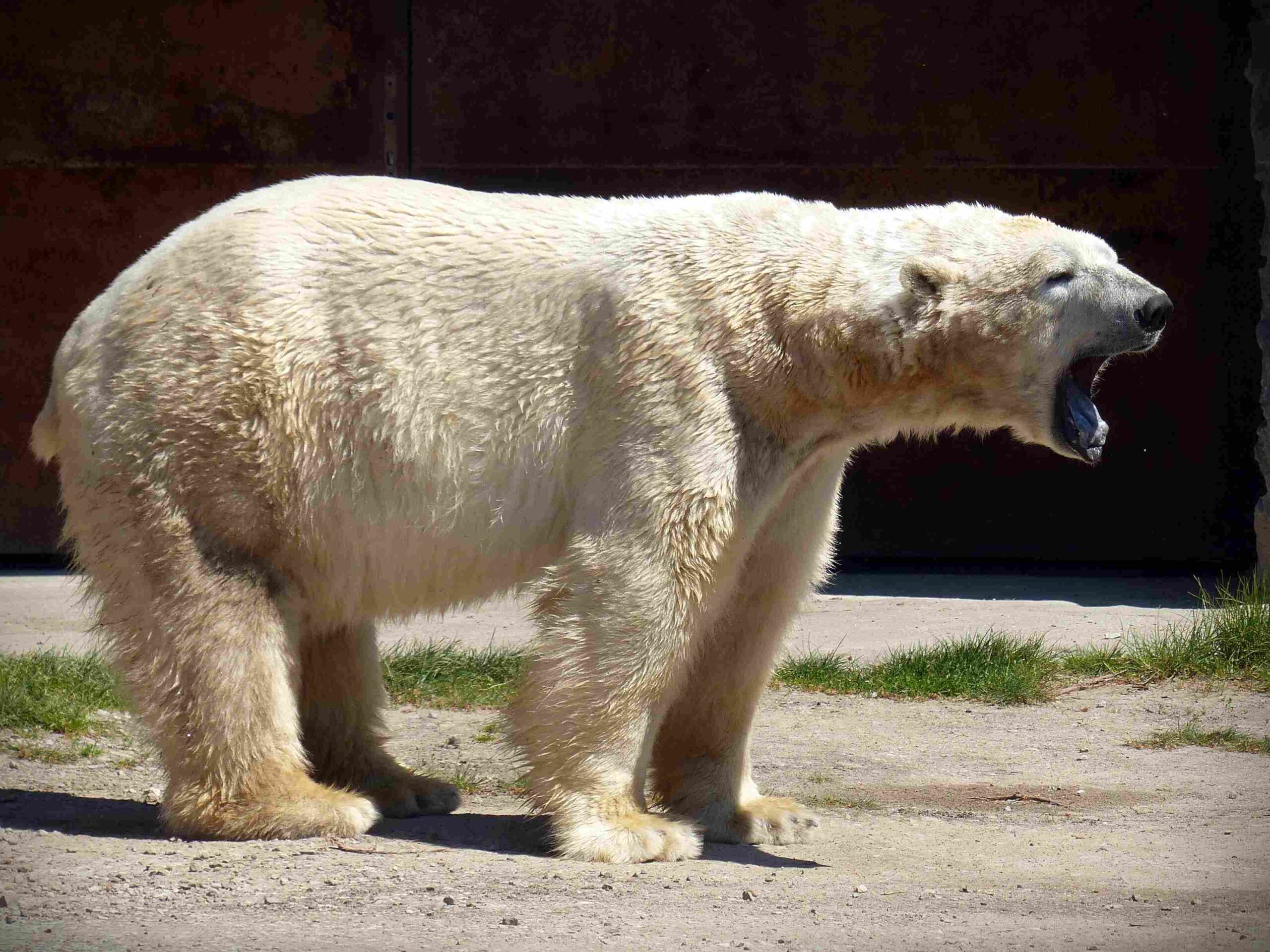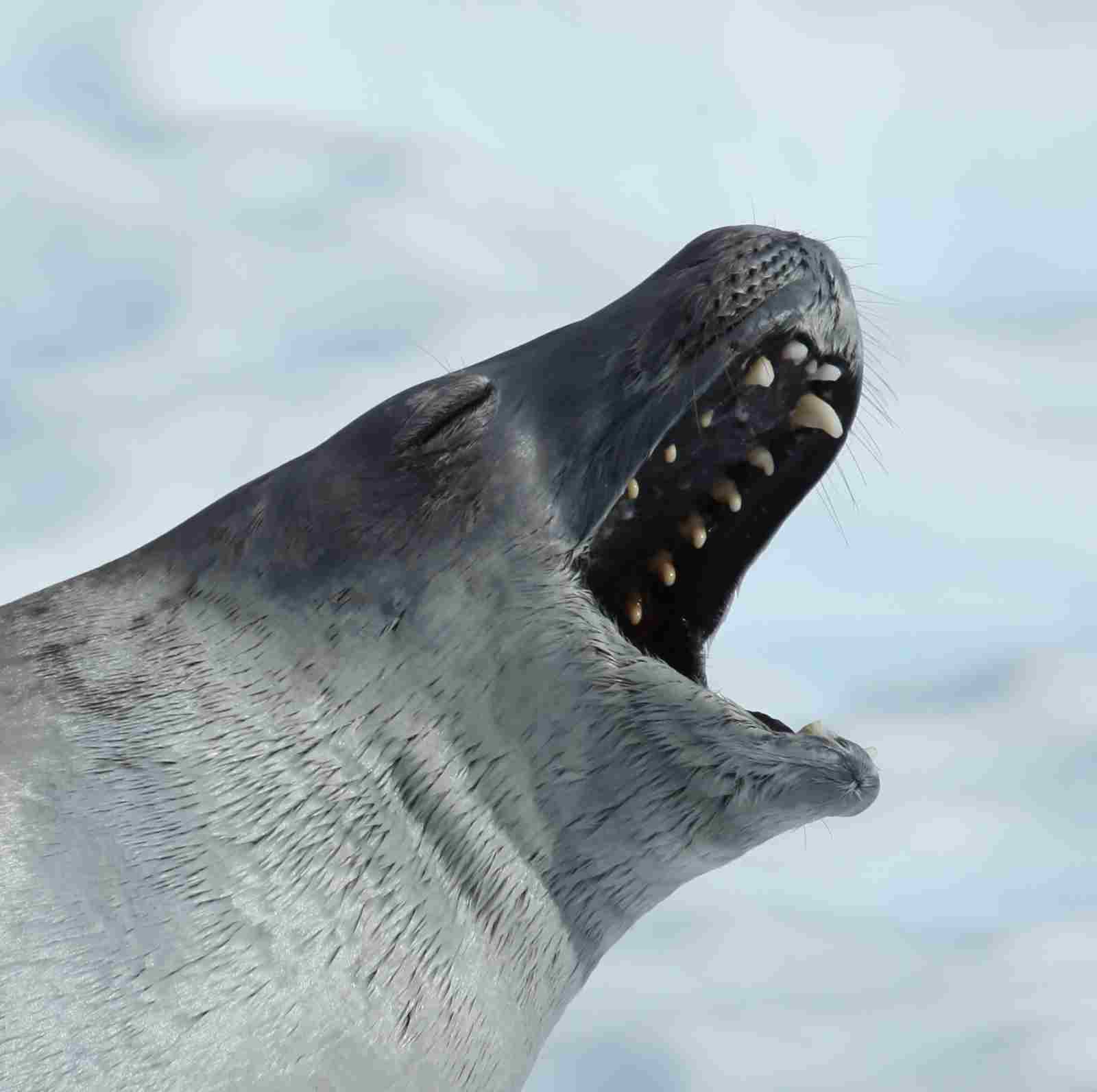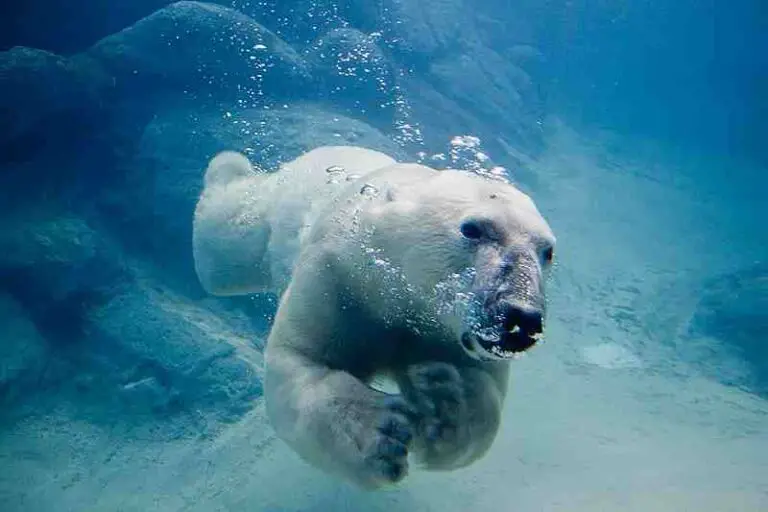Otter Vs Bear Size, Weight, Overall Comparison
In an encounter between an otter and a bear, two mammals with distinct sizes, appearances, and behaviors, we explore the potential dynamics of this confrontation. Bears, being significantly larger and displaying different behaviors compared to otters, set the stage for an interesting analysis. This examination aims to highlight these distinctions and assert that, in a fight, a bear would likely emerge victorious against any species or size of otter. However, the otter’s superior aquatic adaptations may provide advantages in water, allowing it to inflict injury and escape from the bear.
Otter vs Bear: Assessing the Likely Victor in a Confrontation
In a hypothetical scenario involving an otter and a bear, two mammals with varying sizes, appearances, and behaviors, the outcome of a fight is influenced by these distinctions. While bears are larger and possess different behaviors, otters may leverage their aquatic adaptations for advantages in water.
I). Differences in Size, Appearance, and Behavior:
– Bears are significantly larger than otters, with varying species ranging from relatively small to massive sizes. Bears have distinctive appearances, with powerful builds, large claws, and distinct behaviors such as foraging for food and hibernating. Otters, on the other hand, are smaller, sleeker, and exhibit playful behavior, spending a significant amount of time in the water.
II). Bear’s Size and Strength Advantage:
– In a hypothetical fight, a bear would likely win against any species or size of otter due to its larger size and greater strength. The sheer physical dominance of bears over otters establishes a significant advantage in confrontational scenarios.
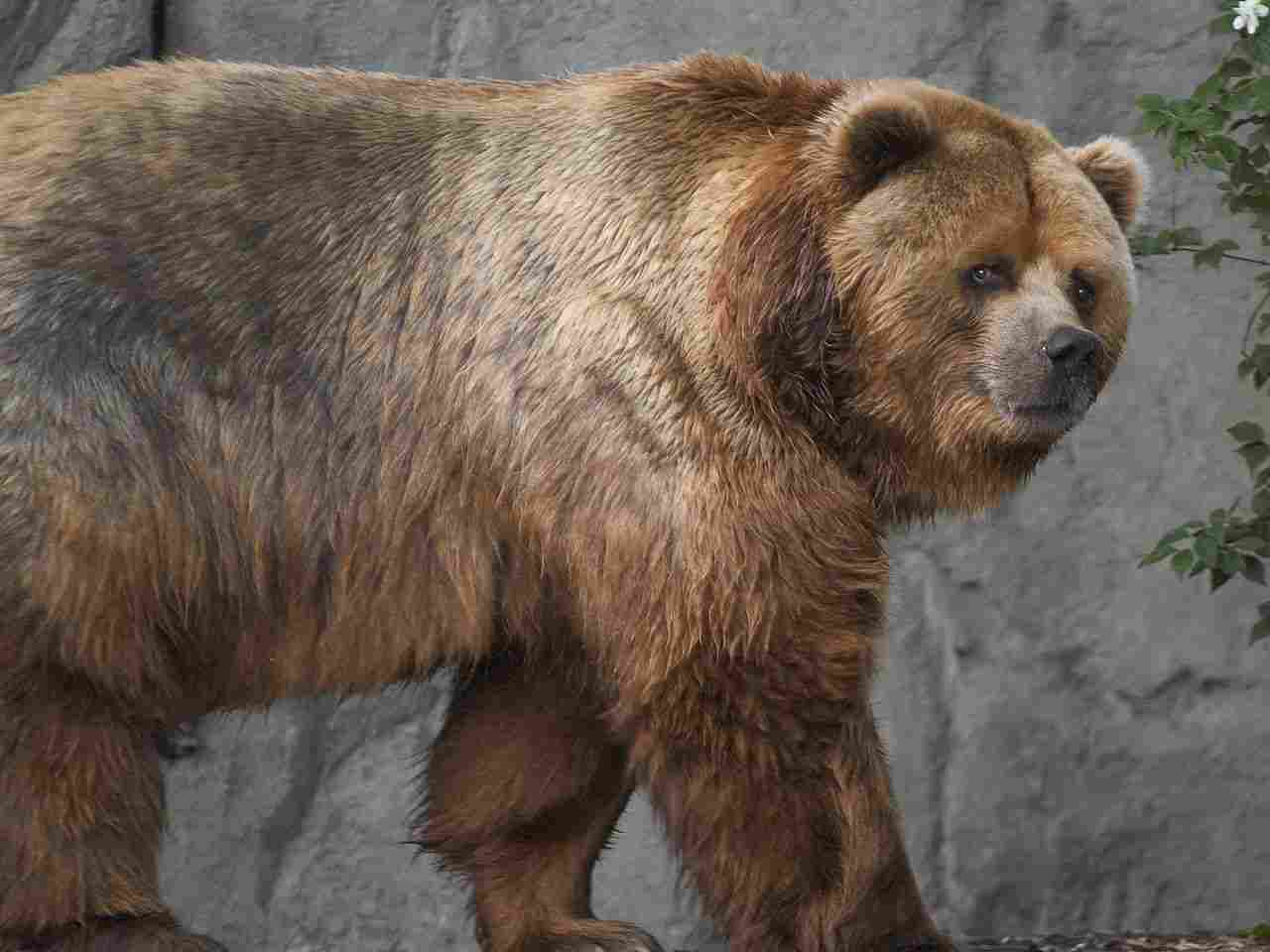
III). Otter’s Aquatic Adaptations:
– Otters possess superior aquatic adaptations, allowing them to navigate and thrive in water environments. While bears may have limited swimming capabilities, otters can leverage their agility, speed, and underwater maneuverability in water-based confrontations.
IV). Bear’s Potential Dominance on Land:
– On land, bears are likely to dominate otters in a fight due to their size and strength advantages. The bear’s physical prowess may limit the otter’s defensive capabilities, making it challenging for the smaller mammal to effectively counter the bear.
V). Otter’s Defensive Strategies in Water:
– In water, otters may use their superior aquatic adaptations defensively. They could inflict injuries on a bear and utilize their agility to escape. However, this advantage may be limited, as bears may still have the upper hand in water due to their size and strength.
VI). Overall Dynamics:
– In this hypothetical scenario, a bear is likely to emerge as the victor in a fight against any species or size of otter due to its larger size and greater strength. While otters may employ defensive strategies in water, the overall dynamics favor the bear in this hypothetical confrontation, especially on land where the bear’s dominance is more pronounced.
*Details of Comparison
| Criteria | Otter | Bear |
| Taxonomy | Family: Mustelidae, Genus: Lutra or Enhydra |
Family: Ursidae, Genus: Ursus
|
| Appearance | Streamlined, webbed feet, dense fur |
Robust build, shaggy coat, hump (varies)
|
| Size | Smaller (3-4 feet) |
Larger, variable (4-10 feet)
|
| Weight | 10-30 pounds |
90-1,600 pounds
|
| Bite Force (PSI) | Moderate | Stronger |
| Physical Offensive Advantages | Agility, aquatic skills |
Strength, keen senses
|
| Physical Defensive Advantages | Agility, communication |
Size, strength, climbing abilities
|
| Speed | 7-12 mph in water |
Up to 30 mph (brown bears)
|
| Agility | Highly agile on land and water |
Agile in different contexts (climbing)
|
| Overall Physical Capacity | Aquatic emphasis, speed, agility |
Versatile adaptation
|
| Habitat Preference(s) | Freshwater habitats |
Diverse ecosystems (forests, ice caps)
|
| Tracks | Webbed footprints, claw marks |
Large, rounded paw prints, claw marks
|
| Lifespan | 10-15 years |
Up to 30 years (species dependent)
|
| Mode of Feeding | Carnivorous (fish, mammals) |
Omnivorous (varied diet)
|
| Intelligence | High | High |
| Social Behavior | Social groups |
Variable (solitary to social behaviors)
|
| Mode of Reproduction | Monogamous or temporary pair bonds |
Diverse mating strategies
|
| Parental Behavior | Strong maternal care, family collaboration |
Strong maternal care, varying social behavior
|
| Proximity to Human-Inhabited Areas | Coastal areas, elusive |
Varies, may adapt to suburban areas
|
| Behavior Toward Humans | Shy, avoids direct interactions |
Varies, may exhibit defensive or aggressive behavior
|
| Danger Posed to Humans | Rarely dangerous |
Potential danger, varies by circumstances
|
| Associated Precautions | Distance observation, waste management |
Bear spray, noise, food storage, waste disposal
|
| Conservation Status | Varies by species, endangered in some cases |
Varies by species, threats include habitat loss, climate change
|
1. Taxonomy:
Otter:
Family: Mustelidae
Genus: Lutra (river otters), Enhydra (sea otters)
Species: Various, including Lutra canadensis (North American river otter) and Enhydra lutris (sea otter)
Bear:
Family: Ursidae
Genus: Ursus
Species: Various, including Ursus arctos (brown bear), Ursus americanus (American black bear), and Ursus maritimus (polar bear)
2. Appearance:
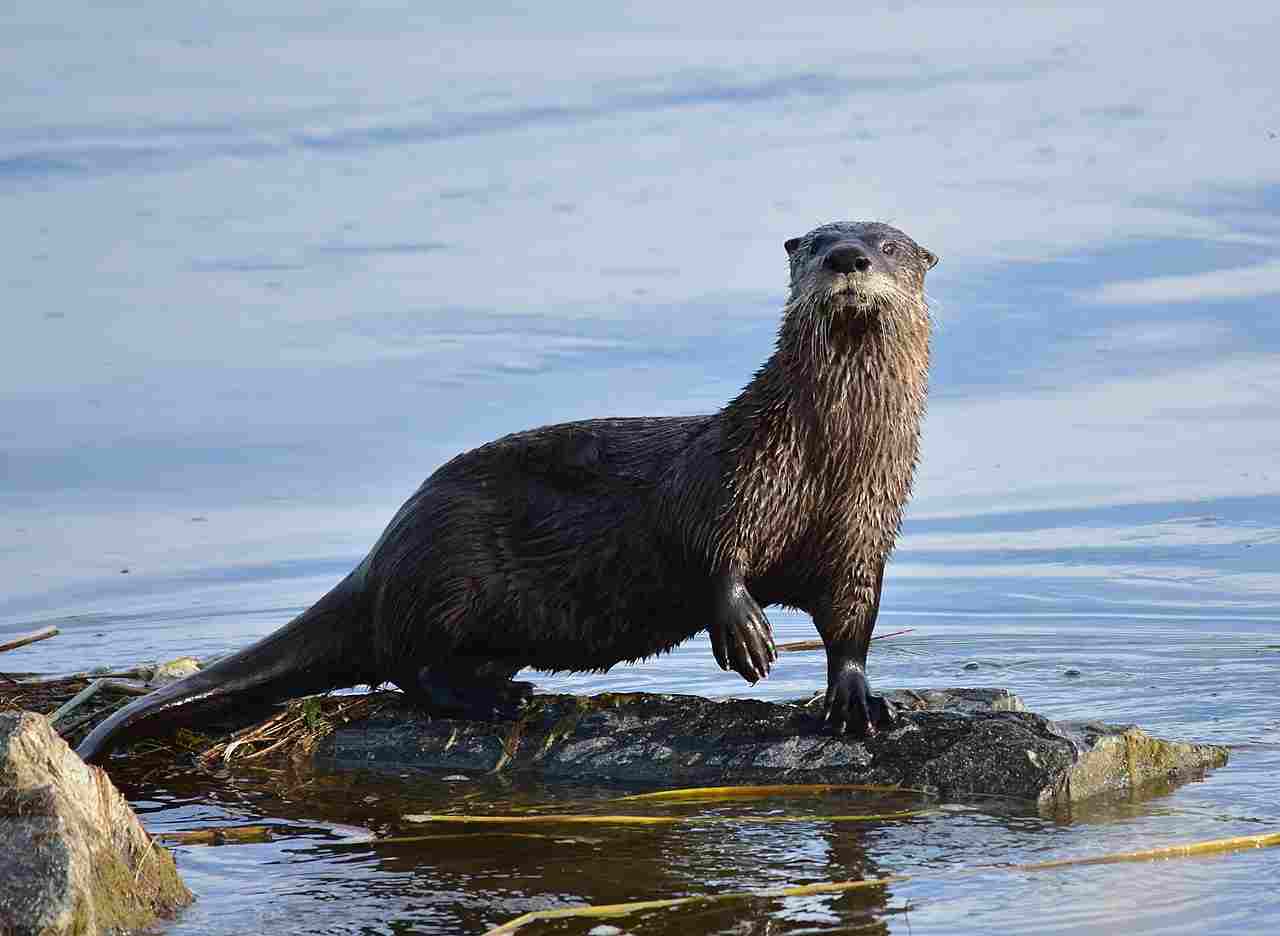
Otter:
Sleek, streamlined bodies with webbed feet and dense fur.
Various colorations, including brown, gray, and white.
Long, flexible tails and small, round heads.
Bear:
Robust build with a shaggy coat and a distinctive hump on the shoulders (varies among species).
Diverse colorations, ranging from black and brown to white.
Prominent snouts and sharp claws.
Comparison: Otters typically exhibit a more slender and elongated appearance, well-adapted for aquatic life, while bears have a more massive build, tailored for terrestrial activities.
Ecological Implications: Otters’ streamlined bodies enhance their swimming capabilities, allowing them to efficiently navigate waterways. Bears, with their robust build, are well-suited for various terrestrial environments, aiding in activities like foraging and climbing trees.
3. Size:
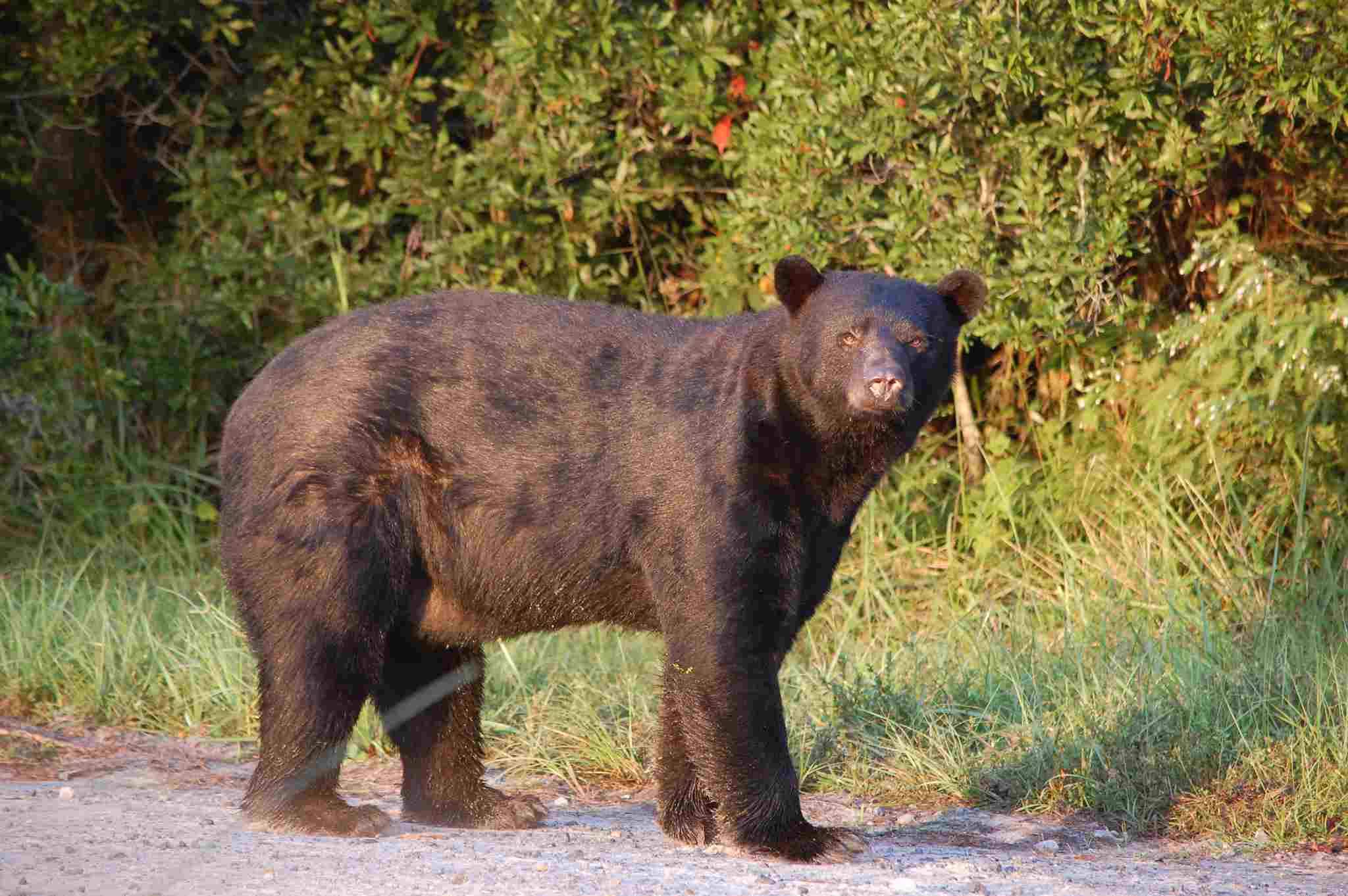
Otter:
Varies by species; North American river otters are around 3 to 4 feet in length.
Bear:
Sizes differ significantly among species; brown bears can range from 5 to 9 feet, polar bears from 7 to 10 feet, and black bears from 4 to 7 feet.
Comparison: Bears generally surpass otters in size, with variations among bear species leading to a broader size range compared to otters.
Ecological Implications: Size influences the ecological roles each species plays. Bears, being larger, may have a more prominent impact on their ecosystems, affecting prey populations and vegetation.
4. Weight:
Otter:
North American river otters weigh around 10 to 30 pounds.
Bear:
Weight varies widely; brown bears can weigh between 200 to 1,500 pounds, polar bears between 900 to 1,600 pounds, and black bears between 90 to 600 pounds.
Comparison: Bears exhibit substantially higher weights compared to otters, reflecting their larger size.
Ecological Implications: Weight influences dietary requirements and hunting strategies, with bears having a greater need for resources due to their larger size.
5. Bite Force (PSI – Pounds per Square Inch):
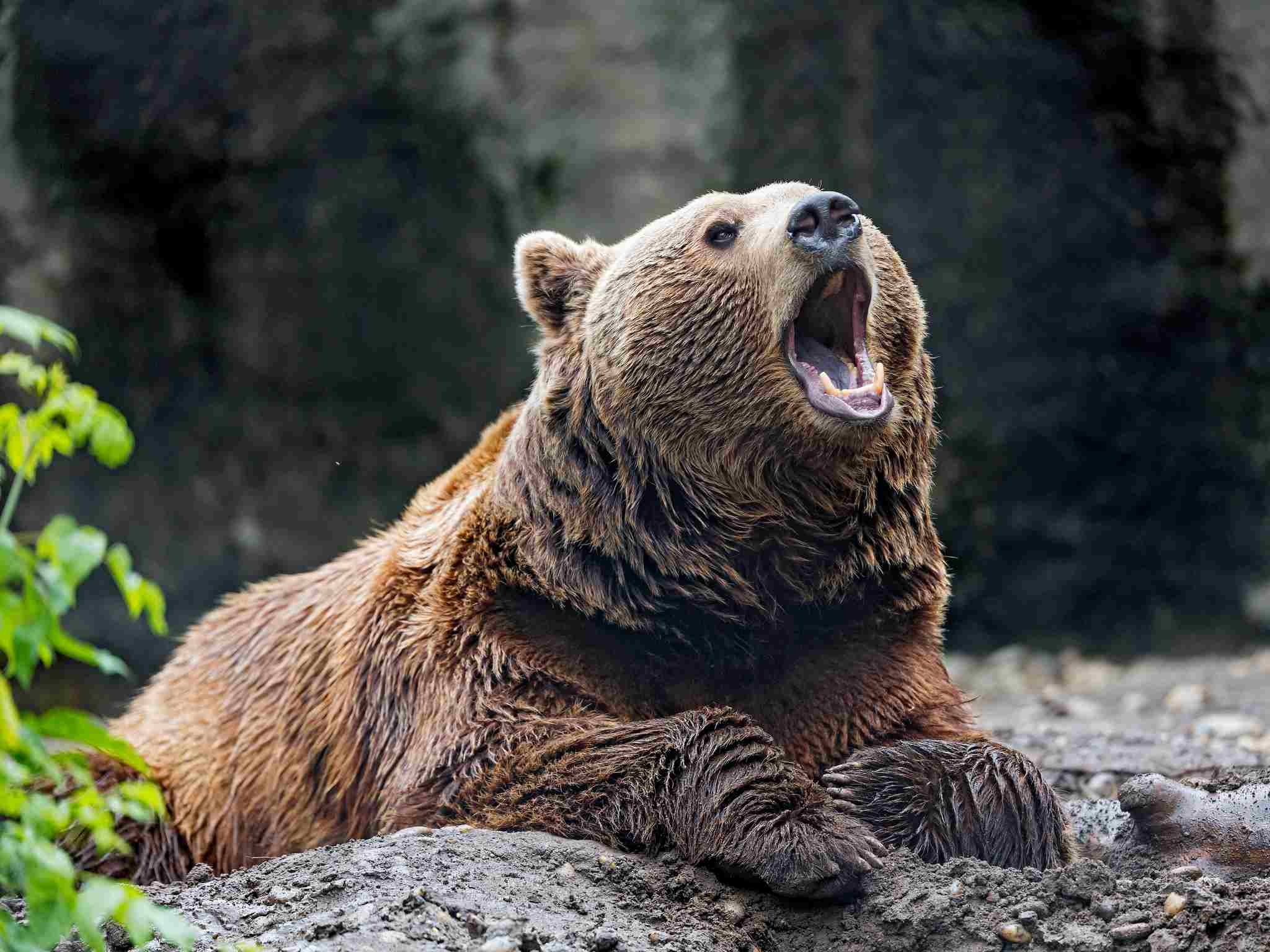
Otter:
Bite force not extensively studied; estimated to be moderate.
Bear:
Bite force varies; polar bears have powerful bites, while brown and black bears have strong jaws.
Comparison: Bears generally possess a stronger bite force compared to otters, contributing to their predatory and scavenging abilities.
Ecological Implications: Bite force influences hunting efficiency and dietary preferences, impacting the roles each species plays in shaping their respective ecosystems.
6. Physical Offensive Advantages:
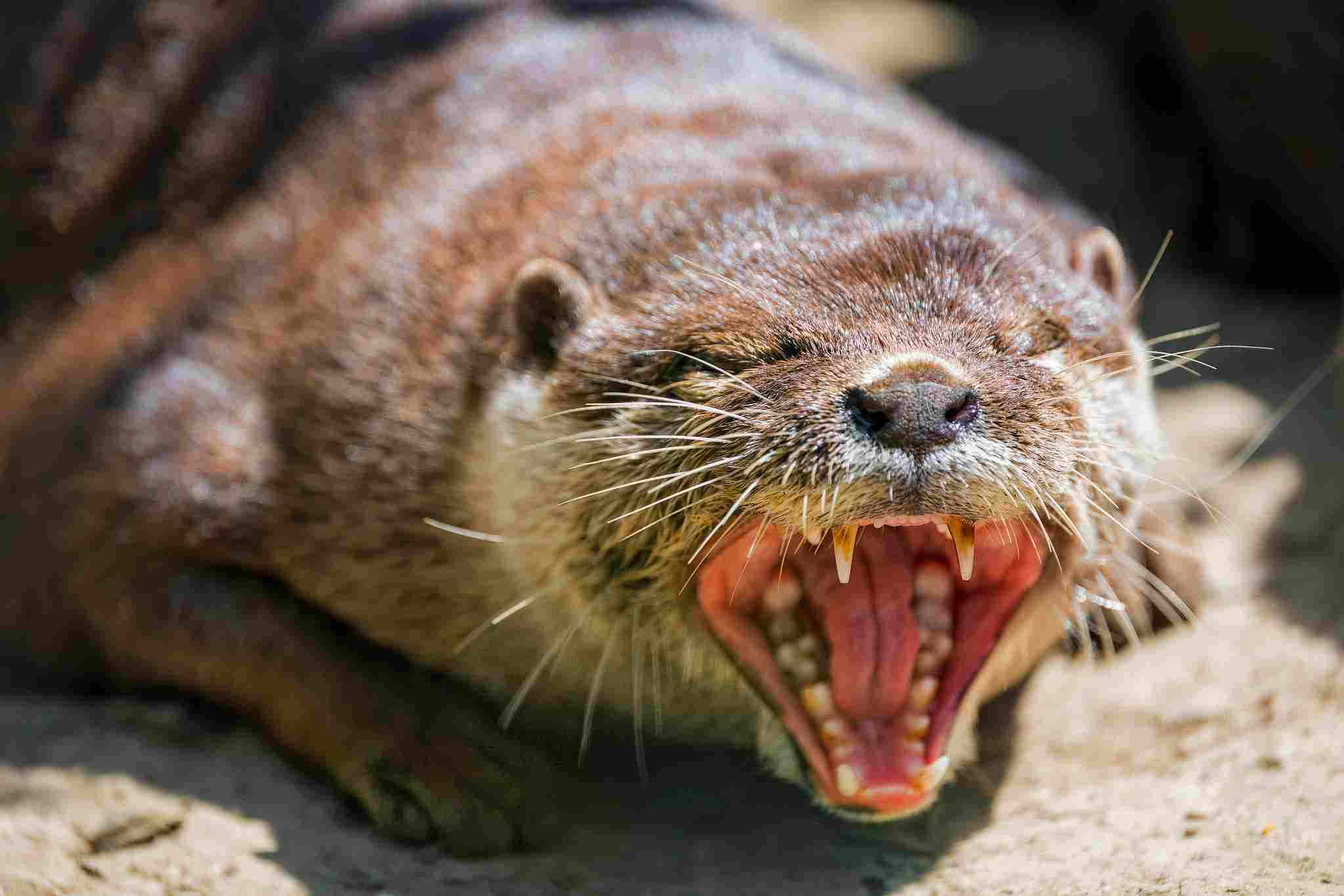
Otter:
Sharp claws and strong jaws aid in catching and consuming prey.
Excellent swimmers, utilizing agility and speed for underwater pursuits.
Bear:
Powerful limbs and sharp claws assist in capturing prey.
Strong sense of smell enhances their tracking abilities.
Comparison: While both otters and bears possess physical attributes for offense, bears rely on their strength and keen senses, while otters emphasize agility and aquatic skills.
Ecological Implications: These offensive advantages contribute to the ecological roles of each species, with otters playing a crucial role in maintaining aquatic ecosystem balance, and bears influencing terrestrial ecosystems through their hunting and foraging.
7. Physical Defensive Advantages:
Otter:
Quick reflexes and agility serve as defensive mechanisms.
Can emit musky odors or vocalize as a deterrent.
Bear:
Strong physique and intimidating presence.
Climbing abilities, especially evident in black bears, offer refuge from threats.
Comparison: Otters rely on agility and communication for defense, while bears leverage their size and strength, with climbing as an additional defensive strategy for some species.
Ecological Implications: These defensive advantages contribute to the survival strategies of each species, impacting their interactions with predators and competitors in their respective ecosystems.
8. Speed (Km/hour or Mile/hour):
Otter:
Can reach speeds of 7 to 12 mph (11 to 19 km/h) in water.
Bear:
Varies among species; brown bears can run at speeds up to 30 mph (48 km/h).
Comparison: Bears generally exhibit higher land speeds compared to otters. Otters excel in aquatic environments, where their speed and agility are essential.
Ecological Implications: Speed influences hunting success and escape from predators. Bears’ land speed is crucial for pursuits and territorial movements, while otters’ aquatic speed aids in capturing prey and evading threats.
9. Agility:
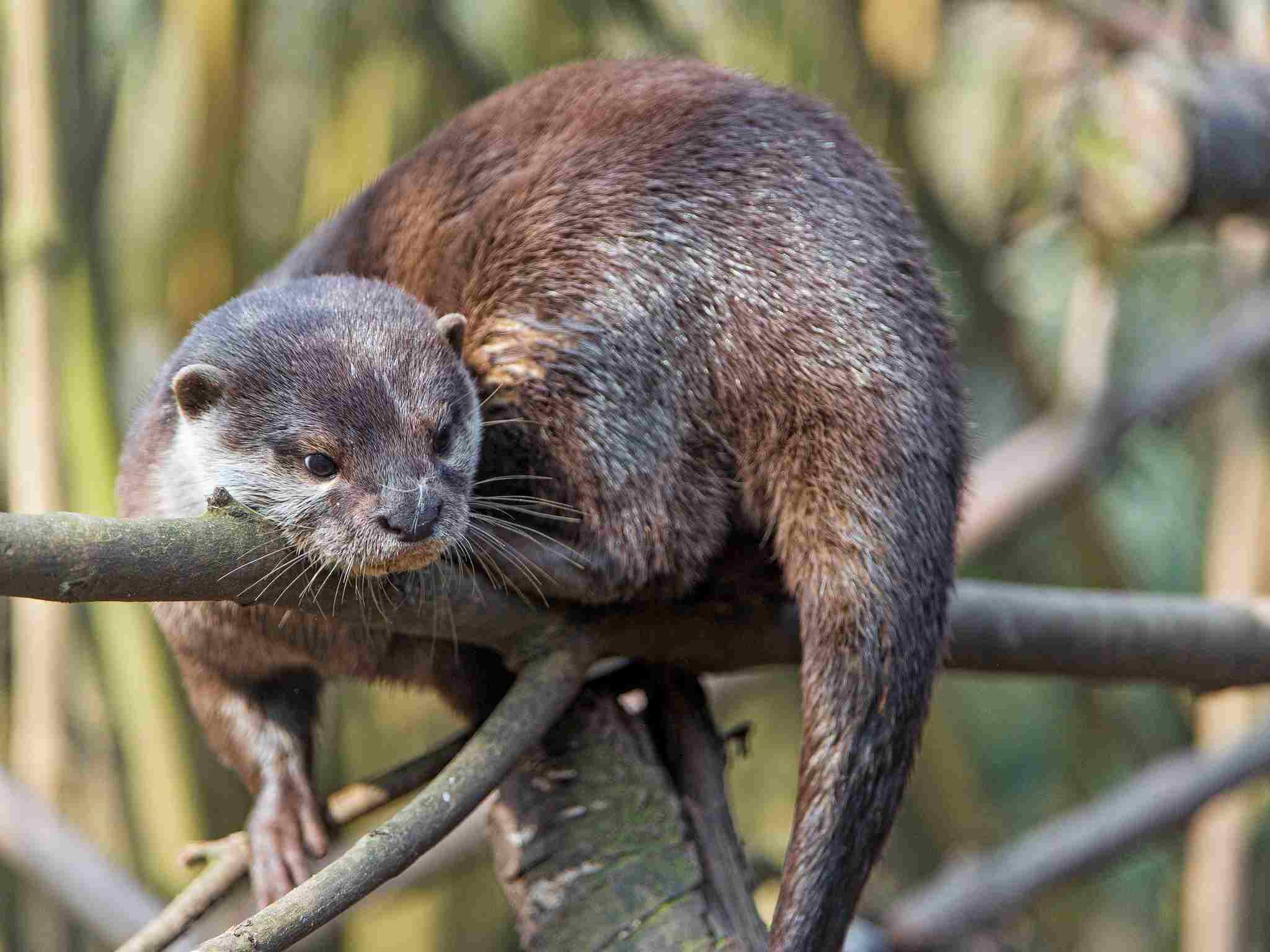
Otter:
Highly agile on land and exceptionally nimble in water.
Can perform acrobatic maneuvers during hunting and play.
Bear:
Surprisingly agile despite their size, particularly evident in climbing abilities (e.g., black bears).
Agile swimmers, especially polar bears.
Comparison: Otters showcase remarkable agility both on land and in water, while bears, despite their larger size, exhibit agility in different contexts, such as climbing and swimming.
Ecological Implications: Agility enhances the adaptability of each species to their respective environments, impacting their roles in ecosystems and their interactions with prey, predators, and competitors.
10. Overall Physical Capacity:
Otter:
Adapted for swift and efficient movement in aquatic environments.
Well-suited for hunting underwater with streamlined bodies and webbed feet.
Bear:
Versatile physical capabilities for both terrestrial and aquatic activities.
Powerful limbs and strength contribute to various behaviors, including foraging and hunting.
Comparison: Otters excel in aquatic environments, emphasizing speed and agility, while bears showcase adaptability for a broader range of activities, including terrestrial pursuits.
Ecological Implications: These physical capacities influence the ecological roles of each species, with otters specializing in aquatic ecosystems and bears impacting both terrestrial and aquatic habitats.
11. Habitat Preference(s):
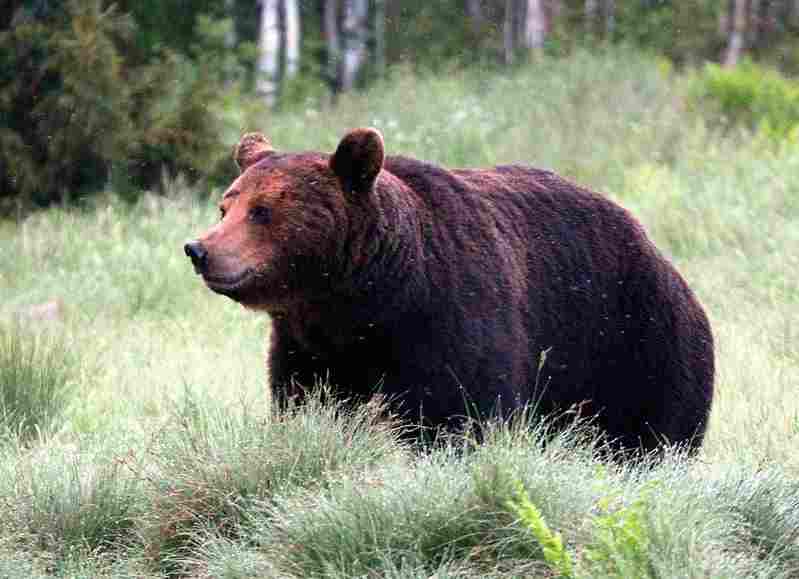
Otter:
Often found near freshwater habitats like rivers, lakes, and coastal areas.
Construct dens along riverbanks for shelter.
Bear:
Diverse habitat preferences; brown bears inhabit forests, polar bears roam Arctic ice, and black bears occupy various ecosystems.
Build dens or use natural shelters for hibernation.
Comparison: Otters predominantly inhabit freshwater environments, while bears showcase a broader range of habitats, adapting to diverse ecosystems.
Ecological Implications: Habitat preferences influence the distribution and ecological impact of each species, with otters contributing to freshwater ecosystem health and bears influencing various terrestrial and polar ecosystems.
12. Tracks:
Otter:
Webbed footprints with distinct claw marks.
Tracks are often seen near water bodies.
Bear:
Large, rounded paw prints with distinctive claw marks.
Presence of tracks varies based on species and habitat.
Comparison: While both otters and bears leave distinct tracks, differences in size and morphology contribute to the identification of each species.
Ecological Implications: Tracking provides valuable information for researchers studying the distribution and behavior of otters and bears, aiding in conservation efforts and ecosystem management.
13. Lifespan:
Otter:
Typically live 10 to 15 years, varying by species.
Bear:
Lifespan varies among species; brown bears may live 20 to 30 years, polar bears around 25 to 30 years, and black bears 20 to 30 years.
Comparison: Bears generally have longer lifespans compared to otters, with variations among bear species.
Ecological Implications: Lifespan influences population dynamics, reproductive strategies, and the overall contribution of each species to ecosystem stability over time.
14. Mode of Feeding:
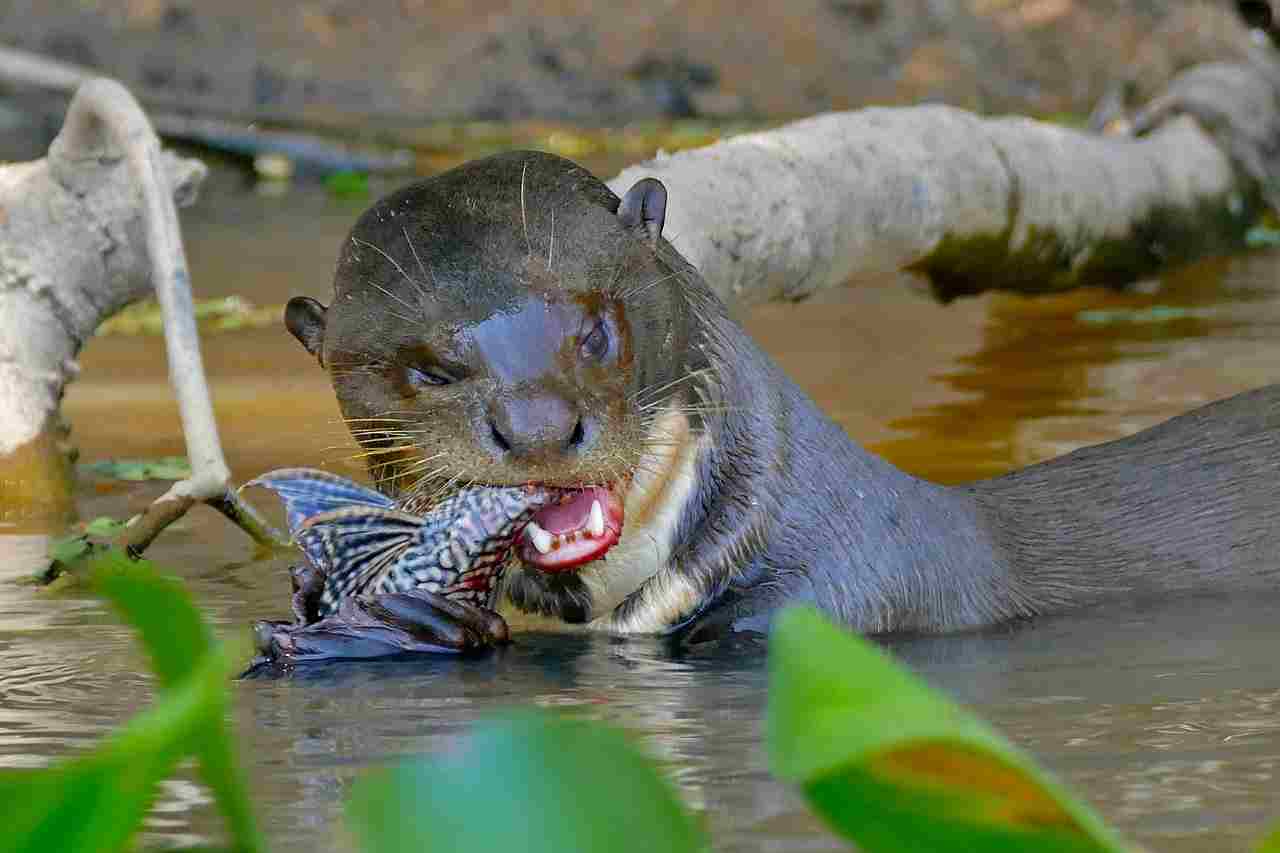
Otter:
Carnivorous diet, primarily consisting of fish, crustaceans, and small mammals.
Use dexterous paws to manipulate and consume prey.
Bear:
Omnivorous diet; varies by species and habitat, including berries, fish, insects, and larger mammals.
Adaptability allows bears to exploit a wide range of food sources.
Comparison: Otters focus on aquatic prey, utilizing their agility and swimming skills, while bears showcase dietary versatility, foraging across both terrestrial and aquatic ecosystems.
Ecological Implications: Differences in feeding habits contribute to the ecological roles of otters and bears, influencing prey populations and shaping ecosystems.
15. Intelligence:
Otter:
Display high levels of intelligence, using tools for tasks like opening shellfish.
Social learning observed among otter communities.
Bear:
Exhibit notable intelligence, capable of problem-solving and adapting to various environments.
Display complex behaviors, including tool usage for obtaining food.
Comparison: Both otters and bears demonstrate intelligence, utilizing problem-solving skills and exhibiting behaviors indicative of cognitive abilities.
Ecological Implications: Intelligence contributes to the adaptive success of each species, influencing their ability to find food, navigate their environment, and interact with other species.
16. Social Behavior:
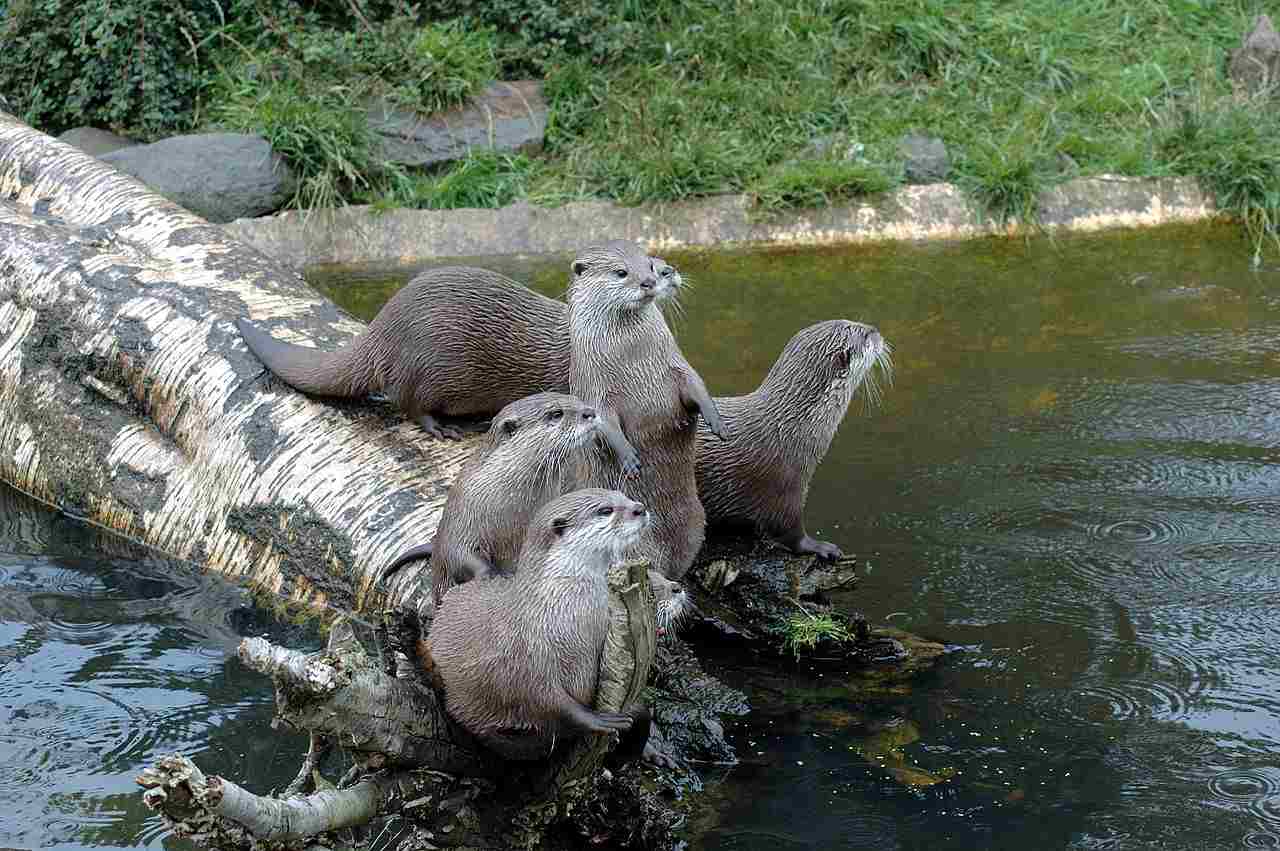
Otter:
Often display social behavior in groups, called rafts, particularly sea otters.
Communication through vocalizations and body language.
Bear:
Varies by species; some bears are solitary (e.g., polar bears), while others, like black bears, may exhibit social behaviors.
Communication through vocalizations, body language, and scent marking.
Comparison: Social behavior ranges from highly social in otters to more solitary in certain bear species.
Ecological Implications: Social structures impact the interactions and dynamics within otter and bear populations, influencing aspects such as mating, hunting, and territory defense.
17. Mode of Reproduction:
Otter:
Typically monogamous or form temporary pair bonds during the breeding season.
Give birth to live young.
Bear:
Mating habits vary; some bears are solitary, while others may form mating pairs temporarily.
Give birth to live young, with cubs requiring maternal care.
Comparison: Otters often exhibit more stable pair bonds during the breeding season compared to the diverse mating strategies observed in bears.
Ecological Implications: Reproductive strategies influence population dynamics, genetic diversity, and the overall contribution of each species to their ecosystems.
18. Parental Behavior:
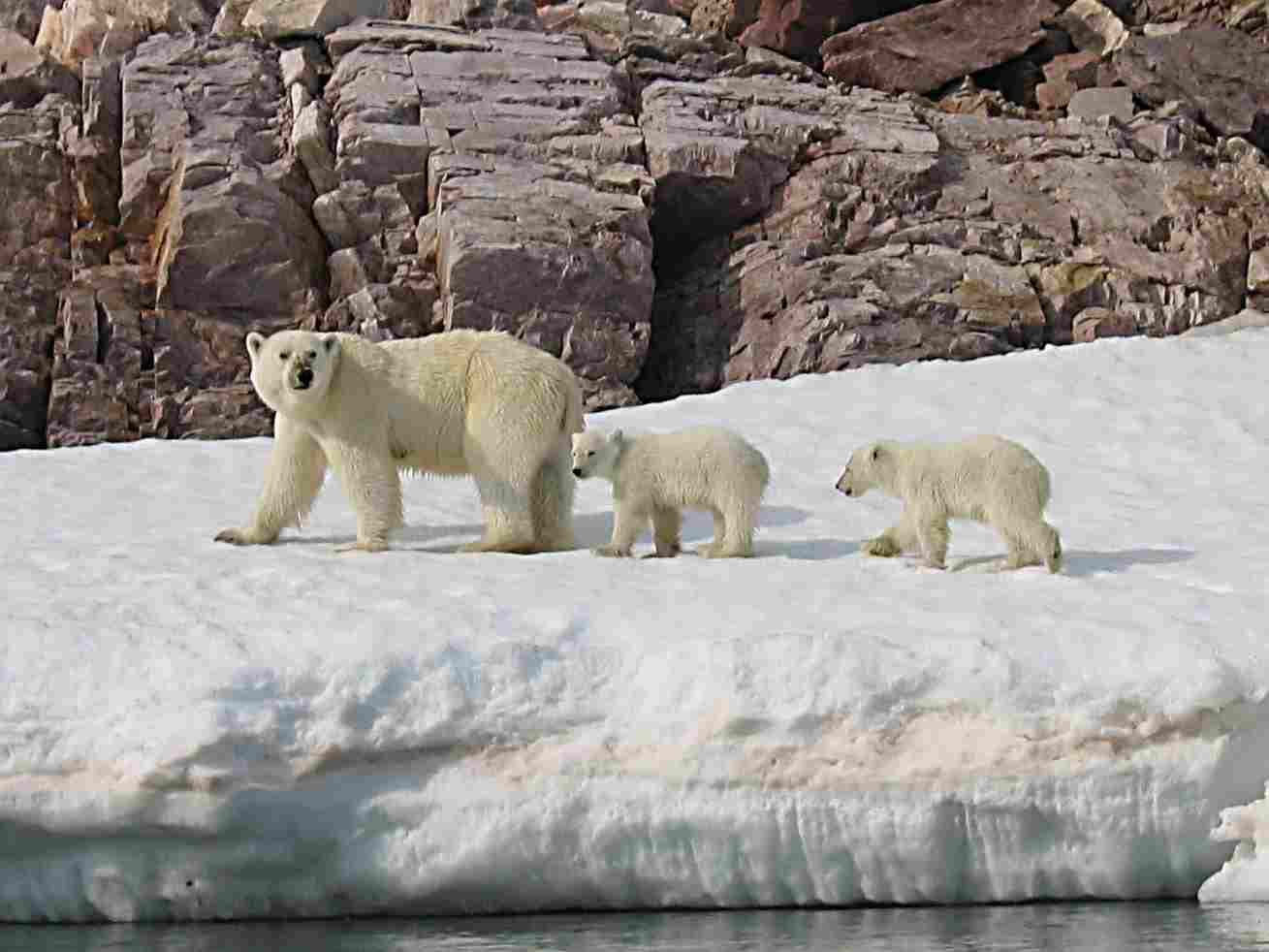
Otter:
Mothers provide extensive care for their young, teaching them essential skills like hunting and swimming.
Family groups may collaborate to care for offspring.
Bear:
Mothers play a significant role in caring for cubs, providing protection, nourishment, and teaching essential survival skills.
Generally, bears are more solitary during the period of maternal care.
Comparison: Both otters and bears exhibit strong maternal care, ensuring the survival and development of their offspring.
Ecological Implications: Parental behavior influences the stability and growth of otter and bear populations, contributing to the overall health of their respective ecosystems.
19. Proximity to Human-Inhabited Areas:
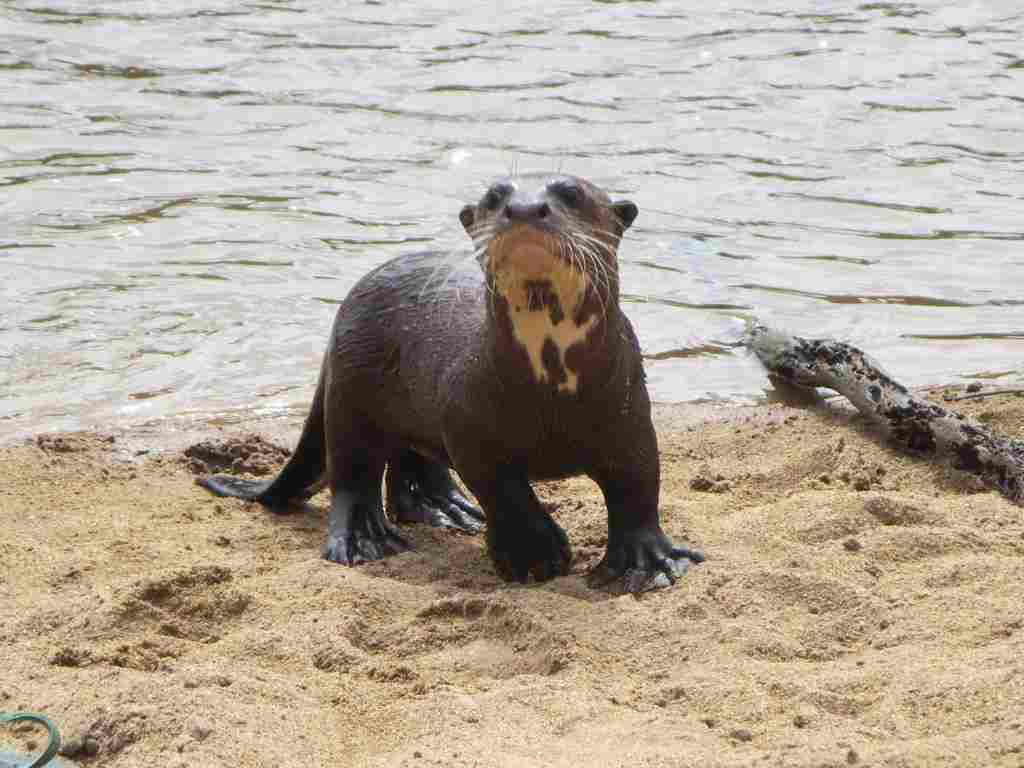
Otter:
May inhabit coastal areas near human settlements but can be elusive.
Interaction with humans varies based on habitat and species.
Bear:
Range proximity to human settlements varies; some species, like black bears, may adapt to suburban areas.
Human-bear conflicts may occur, especially if food sources overlap.
Comparison: Bears, particularly black bears, may have a higher propensity for proximity to human-inhabited areas compared to most otter species.
Ecological Implications: Proximity to human settlements can lead to human-wildlife conflicts, impacting the behavior and survival of otters and bears, as well as human safety.
20. Behavior Toward Humans:
Otter:
Generally shy and elusive, avoiding direct confrontations with humans.
May become more accustomed to human presence in some habitats.
Bear:
Responses vary; some bears may avoid humans, while others may exhibit defensive or aggressive behavior, especially if they feel threatened.
Human-bear interactions can lead to habituation, impacting bear behavior.
Comparison: Otters tend to avoid direct interactions with humans more consistently than bears, which can exhibit a range of behaviors depending on the species and circumstances.
Ecological Implications: Human interactions with otters and bears can influence the behavior and well-being of these species, affecting their ecological roles and conservation status.
21. Danger Posed to Humans:
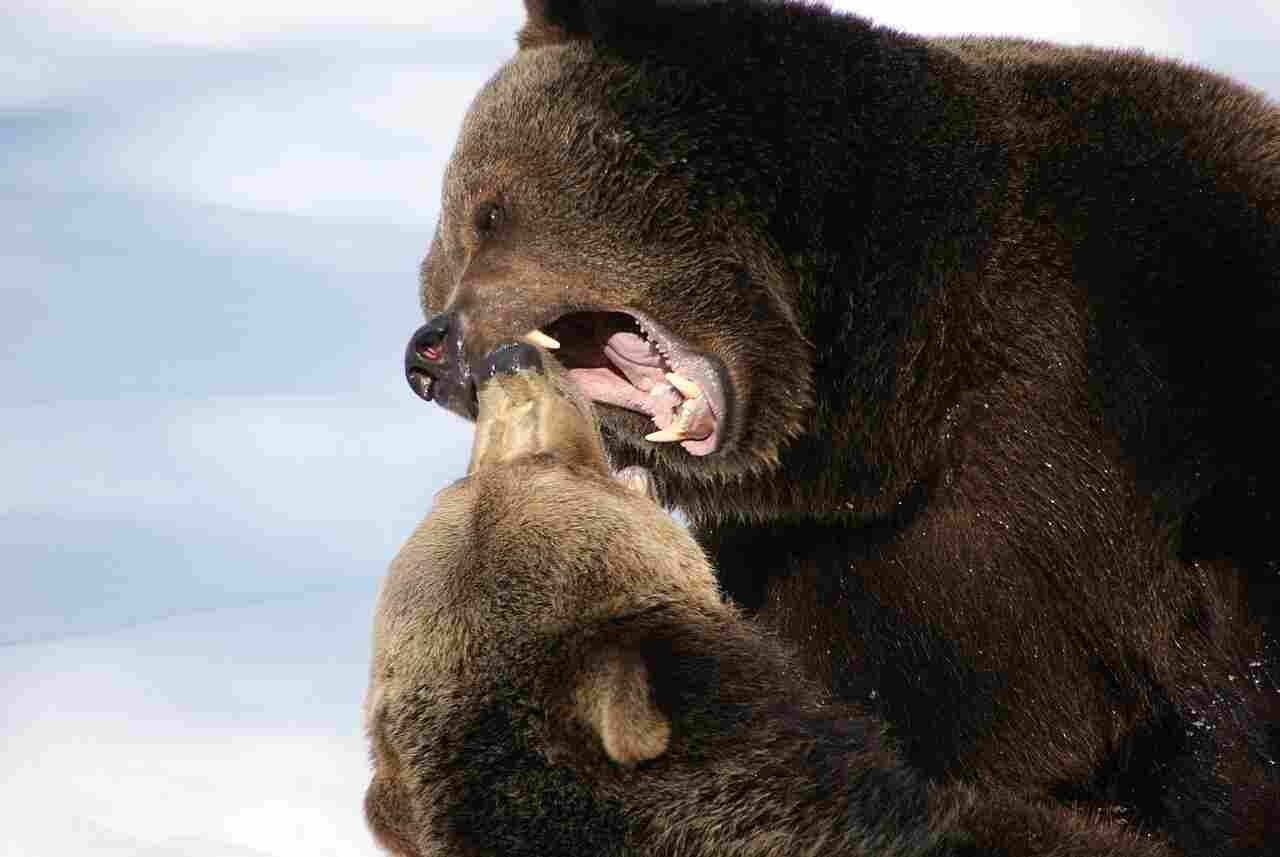
Otter:
Rarely pose a direct threat to humans; bites may occur if otters feel cornered or threatened.
Generally, otters are not considered dangerous to humans.
Bear:
Potential danger exists, especially if a bear feels provoked, surprised, or if human food sources are involved.
Attacks, though infrequent, can be severe and require caution.
Comparison: While otters are not considered dangerous to humans, bears, especially if habituated or provoked, can pose a higher risk.
Ecological Implications: Understanding the potential danger posed by otters and bears informs conservation strategies and promotes coexistence between humans and these wildlife species.
22. Associated Precautions:
Otter:
Observing from a distance is recommended to avoid disturbing natural behavior.
In areas where otters are present, waste disposal should be managed to prevent habitat contamination.
Bear:
Traveling in bear country may require carrying bear spray and making noise to avoid surprise encounters.
Proper food storage and waste disposal are crucial to reduce human-bear conflicts.
Comparison: Precautions vary, with otters generally requiring less specific measures compared to bears, which often necessitate specific safety practices due to potential dangers.
Ecological Implications: Human precautions contribute to the conservation of otter and bear populations by minimizing disturbances and conflicts in their respective habitats.
23. Conservation Status:
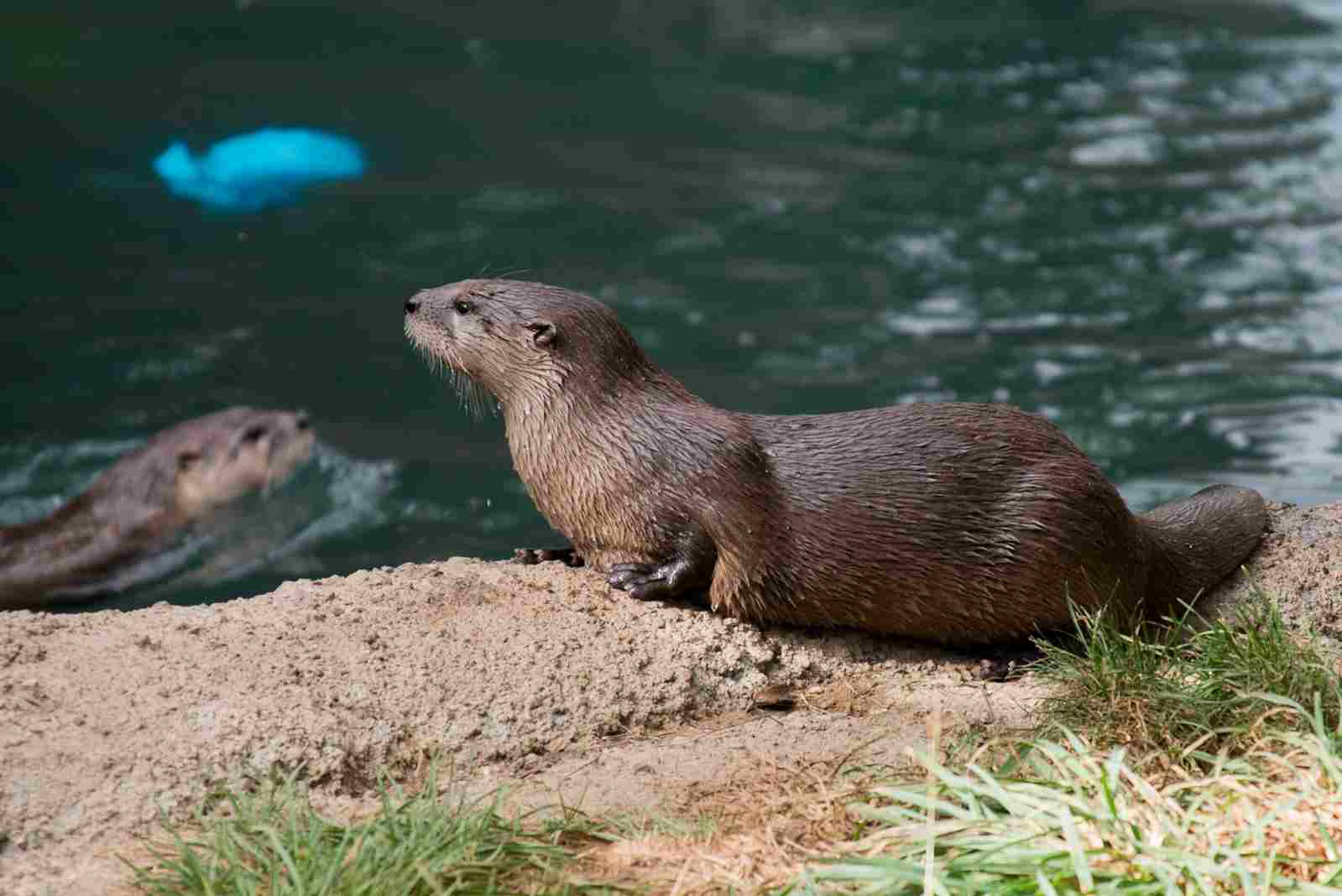
Otter:
Conservation status varies by species; some are listed as least concern, while others, like the sea otter, may be classified as endangered due to habitat loss and pollution.
Bear:
Conservation status varies among species; some are least concern, while others, like the polar bear, face significant threats due to climate change and loss of sea ice habitat.
Comparison: Conservation statuses depend on the species and their specific threats, with both otters and bears facing challenges related to habitat degradation, human-wildlife conflicts, and climate change.
Ecological Implications: Conservation efforts are essential to maintain healthy otter and bear populations, as they play integral roles in ecosystems and contribute to biodiversity.
Summary of Comparison
Taxonomy:
Otter belongs to the family Mustelidae, genus Lutra (river otters) or Enhydra (sea otters), while bears belong to the family Ursidae, genus Ursus.
Appearance:
Otters have sleek, streamlined bodies, webbed feet, and dense fur, while bears have a robust build, shaggy coat, and distinctive hump (varies by species).
Size:
Otters are smaller, with North American river otters around 3 to 4 feet, while bears vary widely, ranging from 4 to 10 feet depending on the species.
Weight:
Otters weigh around 10 to 30 pounds, whereas bears exhibit a broader weight range, from 90 to 1,600 pounds.
Bite Force (PSI):
Otter bite force is moderate, while bears generally possess a stronger bite force.
Physical Offensive Advantages:
Otters emphasize agility and aquatic skills, while bears rely on strength and keen senses.
Physical Defensive Advantages:
Otters use agility and communication, while bears leverage size, strength, and climbing abilities.
Speed:
Otters can reach speeds of 7 to 12 mph in water, while bears, especially brown bears, can run up to 30 mph.
Agility:
Otters are highly agile on land and in water, whereas bears exhibit agility in different contexts, such as climbing and swimming.
Overall Physical Capacity:
Otters excel in aquatic environments, emphasizing speed and agility, while bears showcase adaptability for a broader range of activities.
Habitat Preference(s):
Otters prefer freshwater habitats, while bears occupy diverse ecosystems, including forests, ice caps, and various terrains.
Tracks:
Both leave distinct tracks; otters have webbed footprints, and bears have large, rounded paw prints.
Lifespan:
Otters generally live 10 to 15 years, while bears, depending on the species, can live up to 30 years.
Mode of Feeding:
Otters have a carnivorous diet, focusing on fish and small mammals, while bears are omnivores with a diverse diet.
Intelligence:
Both otters and bears demonstrate high levels of intelligence, utilizing problem-solving skills.
Social Behavior:
Otters may form social groups, while bears exhibit varying levels of social behavior, from solitary to more social interactions.
Mode of Reproduction:
Otters may form monogamous bonds, while bears exhibit diverse mating strategies.
Parental Behavior:
Both species show strong maternal care, teaching essential skills to their offspring.
Proximity to Human-Inhabited Areas:
Otters may inhabit coastal areas, while bears, especially black bears, may adapt to suburban environments.
Behavior Toward Humans:
Otters are generally shy, while bears can exhibit diverse behaviors based on species and circumstances.
Danger Posed to Humans:
Otters are rarely considered dangerous, whereas bears, if provoked or habituated, can pose a higher risk.
Associated Precautions:
Precautions vary, with otters generally requiring less specific measures than bears.
Conservation Status:
Conservation statuses vary among species; otters and bears face threats related to habitat loss, pollution, and climate change.
Conclusion
I. Similarities:
Both otters and bears exhibit strong parental care, intelligence, and adaptability to their respective environments.
Human-wildlife interactions and habitat preservation are critical for the conservation of both species.
II. Differences:
Size, with bears generally larger than otters, influencing their ecological impact. – Habitat preferences, with otters predominantly inhabiting freshwater environments, and bears showcasing diverse habitat adaptability.
– Human-bear conflicts and associated precautions, reflecting differences in the potential danger posed by each species.
